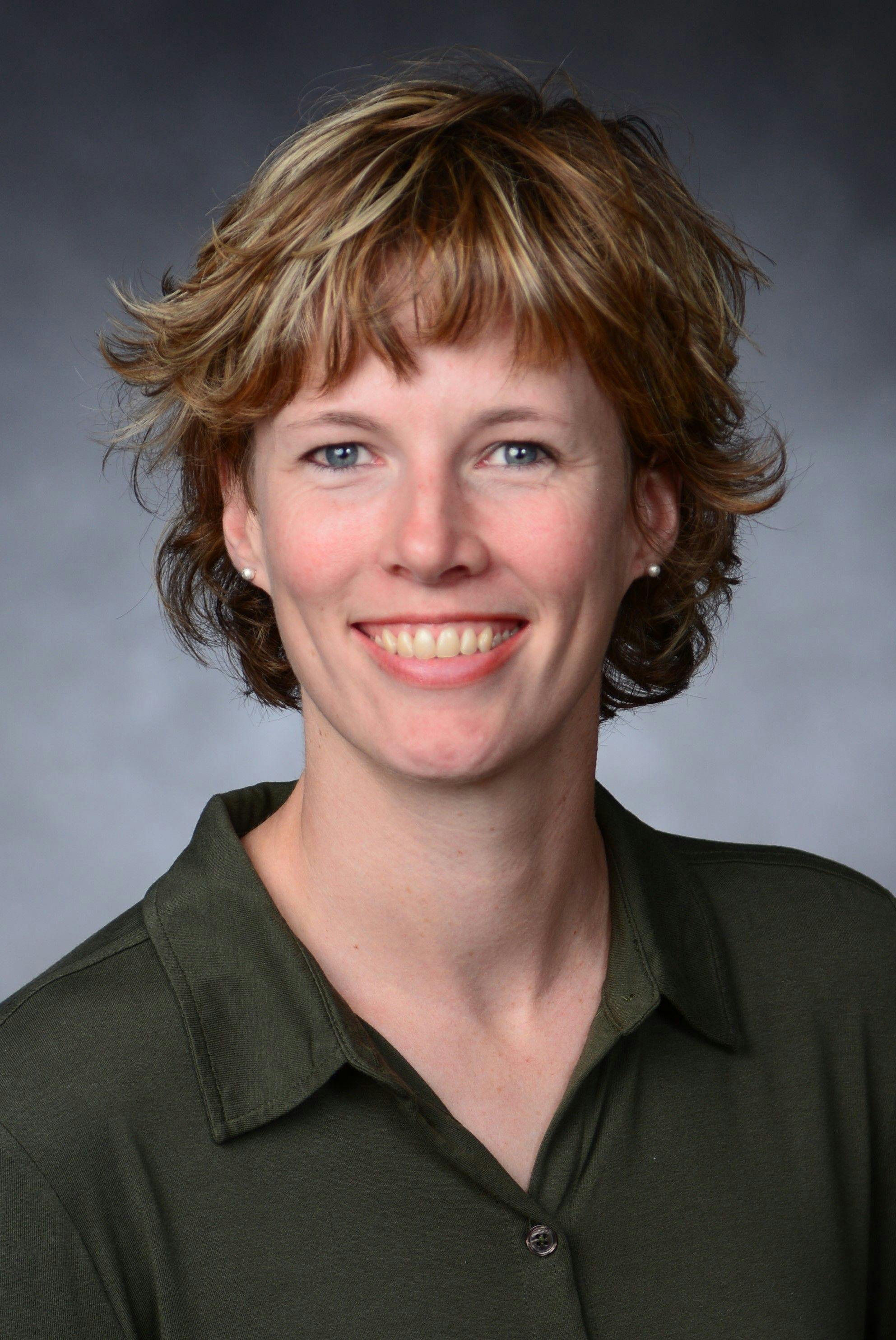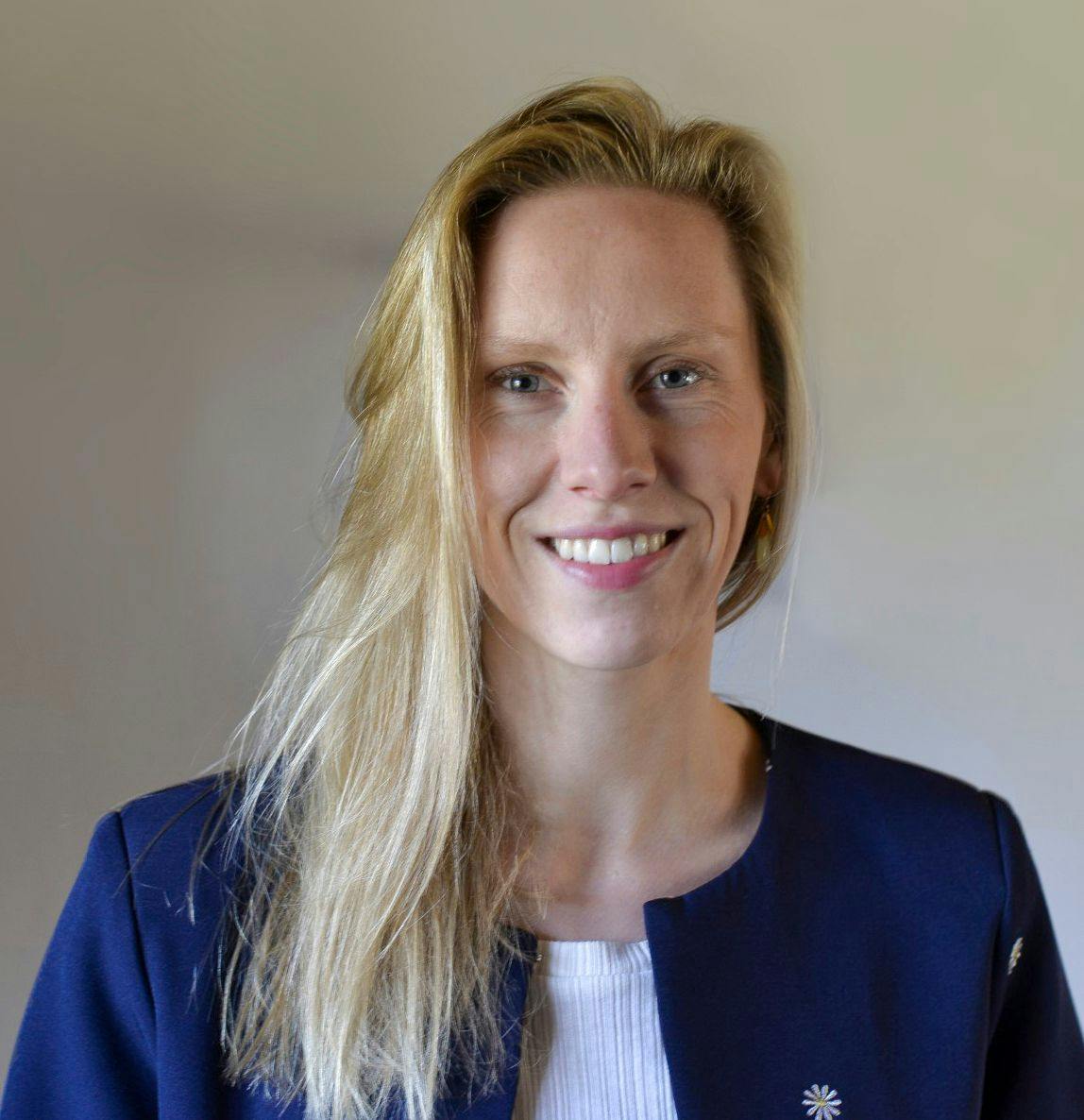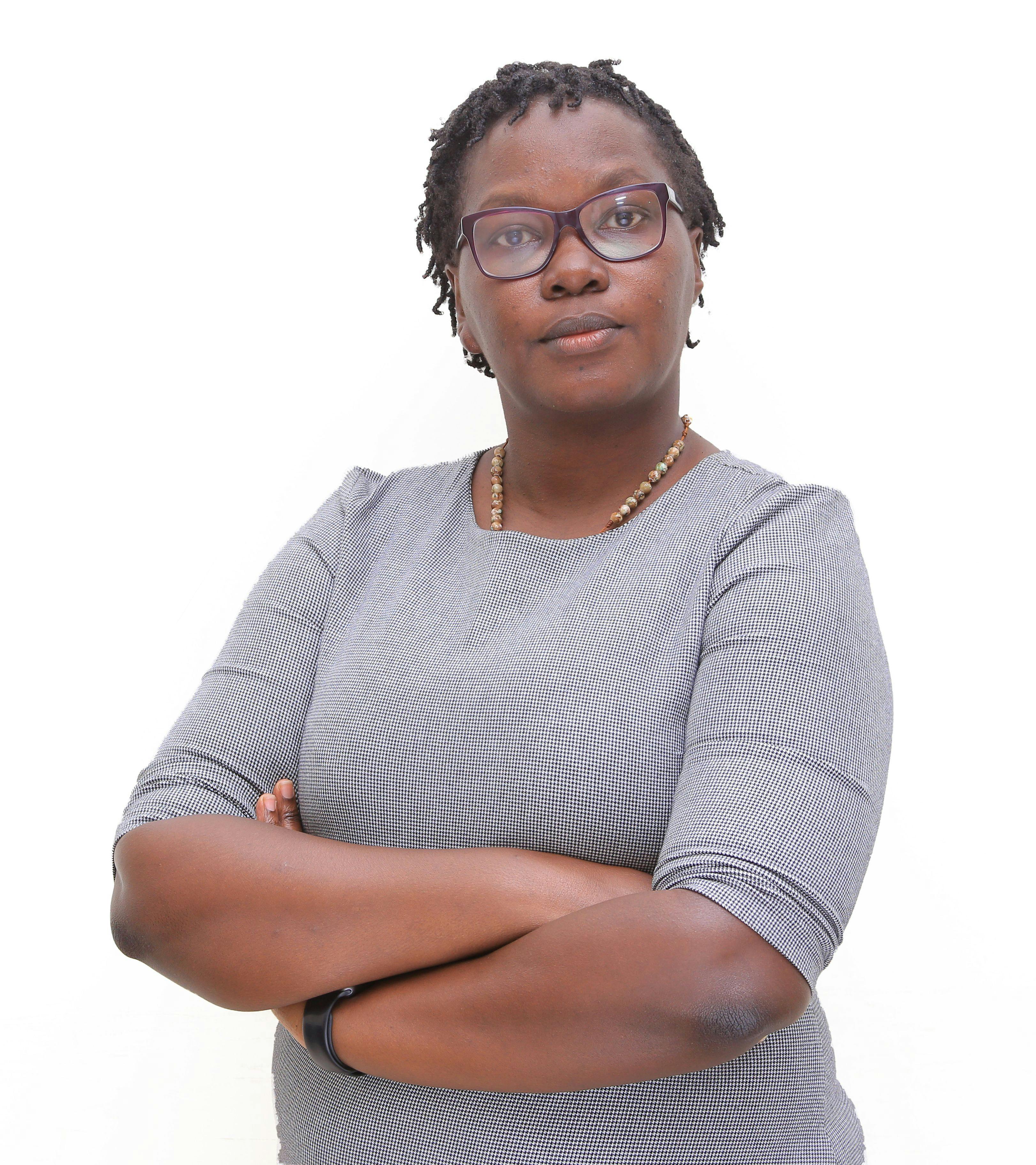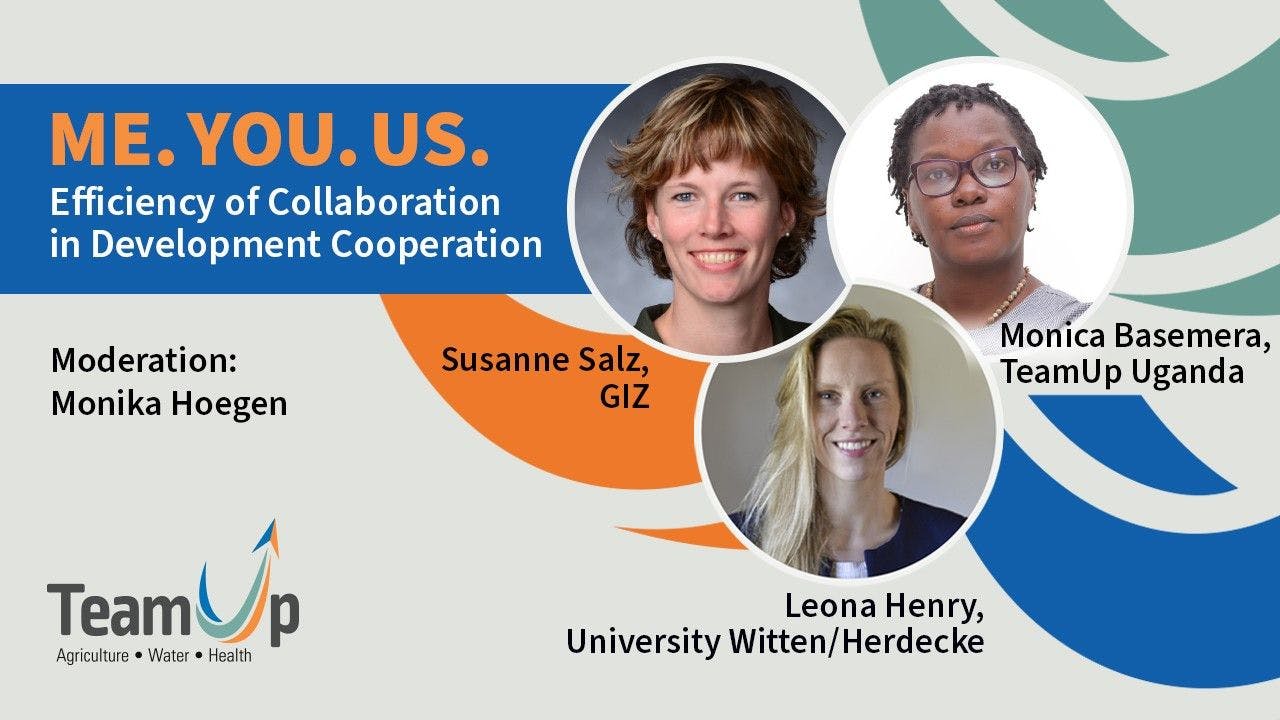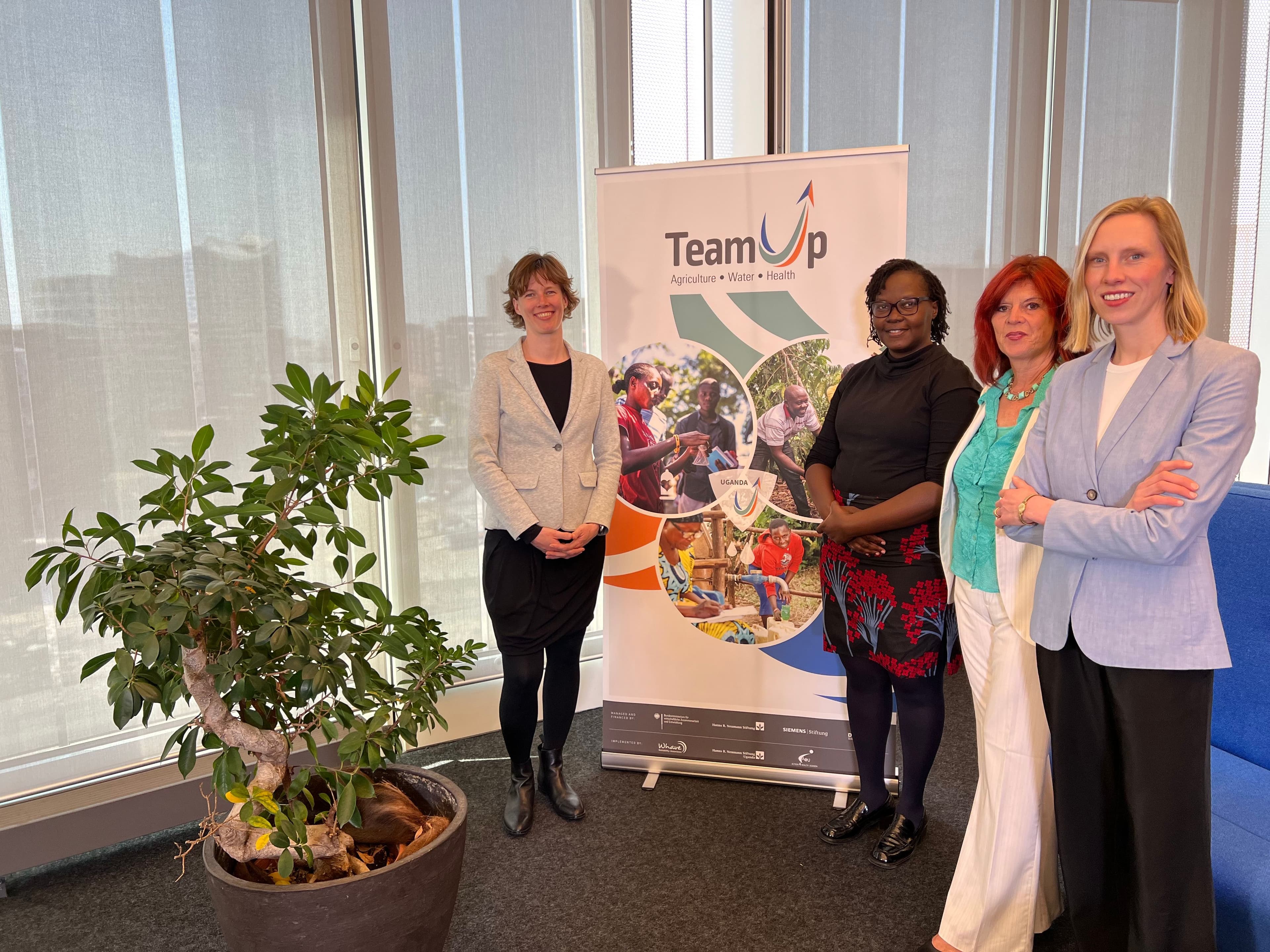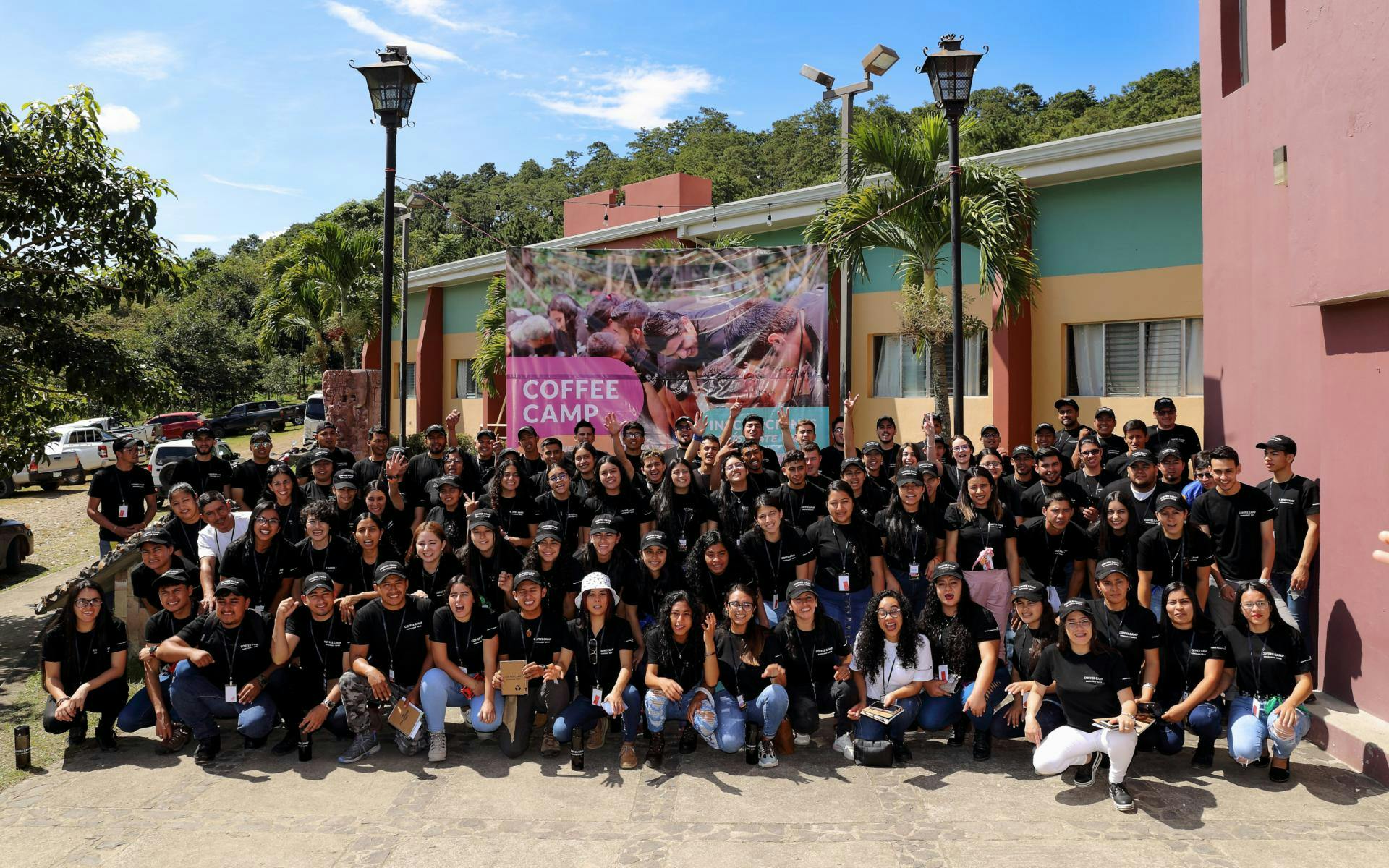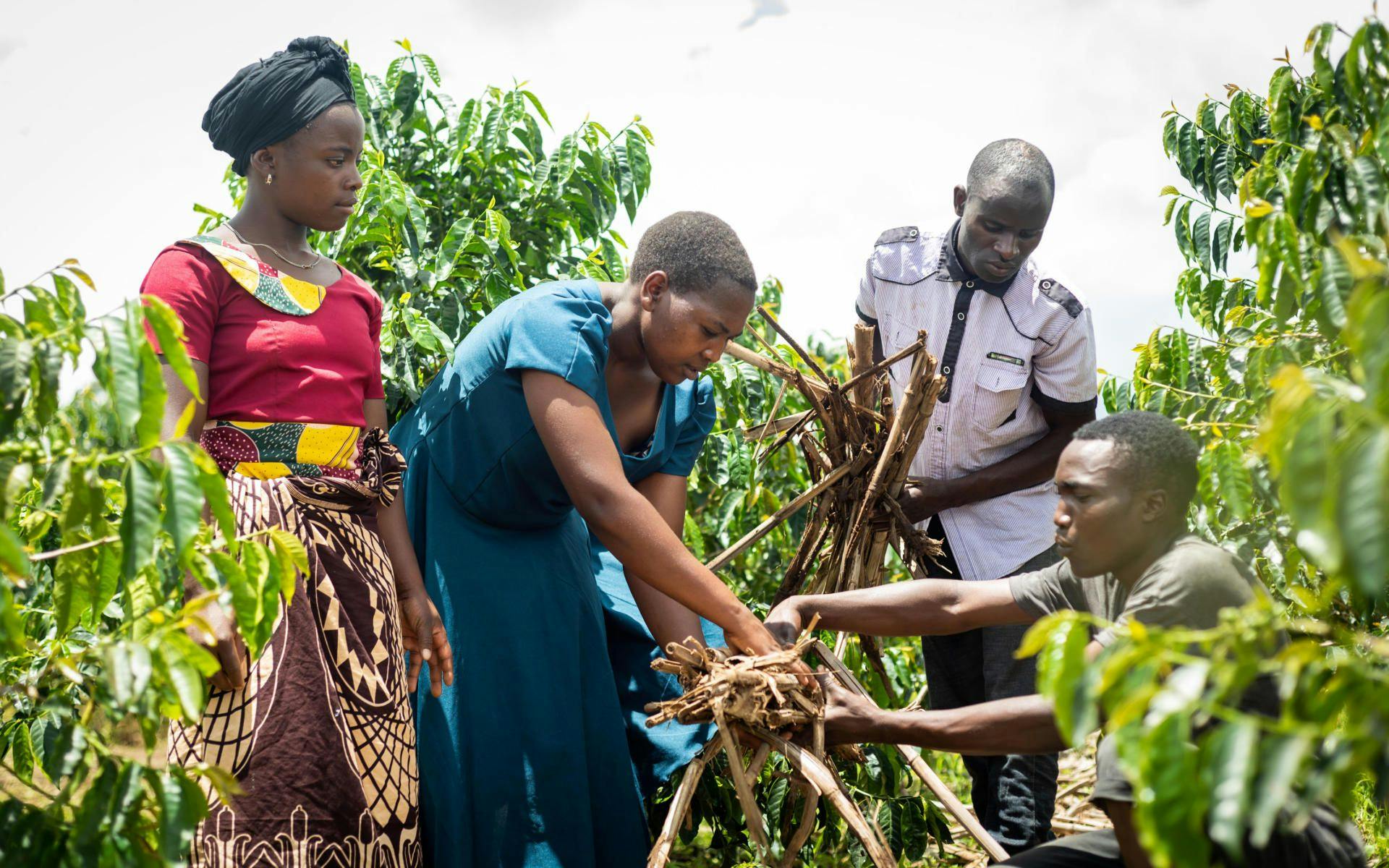Good Intentions and High Ambitions Are no Guarantee for Success
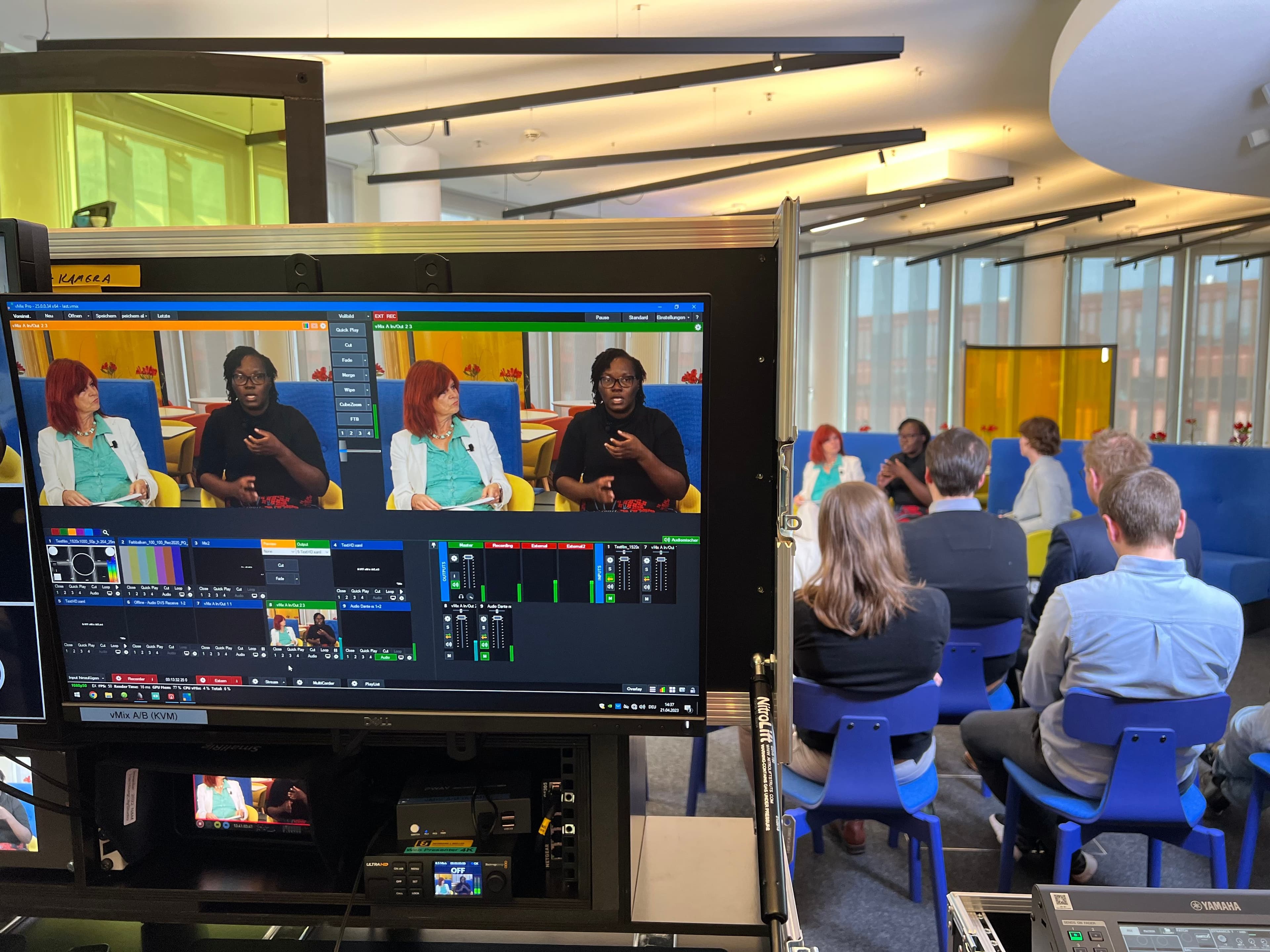
Multi-stakeholder partnerships in development cooperation need to square the circle: How to be successful and effective in combining expertise and professionalism of different organizations into one program.
TeamUp Uganda is a multi-stakeholder partnership. Starting in 2019, and focusing on the areas of agriculture, water and health, TeamUp Uganda combines the expertises of three implementing organisations in Uganda: Action 4 Health Uganda, Hanns R. Neumann Stiftung, and Whave Solutions. Throughout the pilot phase, which concluded in 2022, the group amassed a wealth of valuable experience in setting up and implementing a multi-stakeholder partnership.
To facilitate the exchange of learnings and reflect with experts from other multi-stakeholder initiatives, a thought-provoking panel discussion was organized and recorded in April 2023 together with the German funding partners Federal Ministry for Economic Cooperation and Development (BMZ), Deutsche Stiftung Weltbevölkerung (DSW), Hanns R. Neumann Stiftung and Siemens Stiftung. The aim: to discuss how collaboration in development cooperation can be successful. On stage: three experts from the areas of implementation, academic research and consultancy.
Me. You. Us. Efficiency of Collaboration in Development Cooperation
‘If you want to go fast, go alone. If you want to go far, go together.’ With this well-fitting proverb, moderator Monika Hoegen opened the discussion about the complex topic of development cooperation within a multi-stakeholder context. Addressing the panel, she asked “But how?”, “How can a complex operation of several stakeholders be designed, implemented and managed to work successfully and make life better?”
Initial steps
Susanne Salz, Gesellschaft für Internationale Zusammenarbeit (GIZ) and Head of Project "Partnerships2030", is providing counselling and training to individuals seeking engagement in multi-stakeholder partnerships. She begins
with a thought-provoking argument that the groundwork for successful collaboration must commence even before a project is officially launched. “There are many key points to consider before starting off,” she explained. One is a thorough context analysis which asks if there is already a similar partnership and if it is worth starting something new. “If the answer is ‘yes’, a stakeholder analysis has to follow suit: ‘Who should really be seated at the table for the project to become worthwhile?’”
Salz recommended to subsequently investing some time in getting to know each other, building trust, establishing roles and governance structures. Setting clear goals together is crucial so that everybody can get on board and knows where the journey is supposed to lead to. “For example, if you involve youth, do they know and do the other stakeholders know what their roles are? Do – with respect to TeamUp – the Ugandan and German stakeholders know their respective roles and do they coordinate with each other?” Salz asked to illuminate her point.
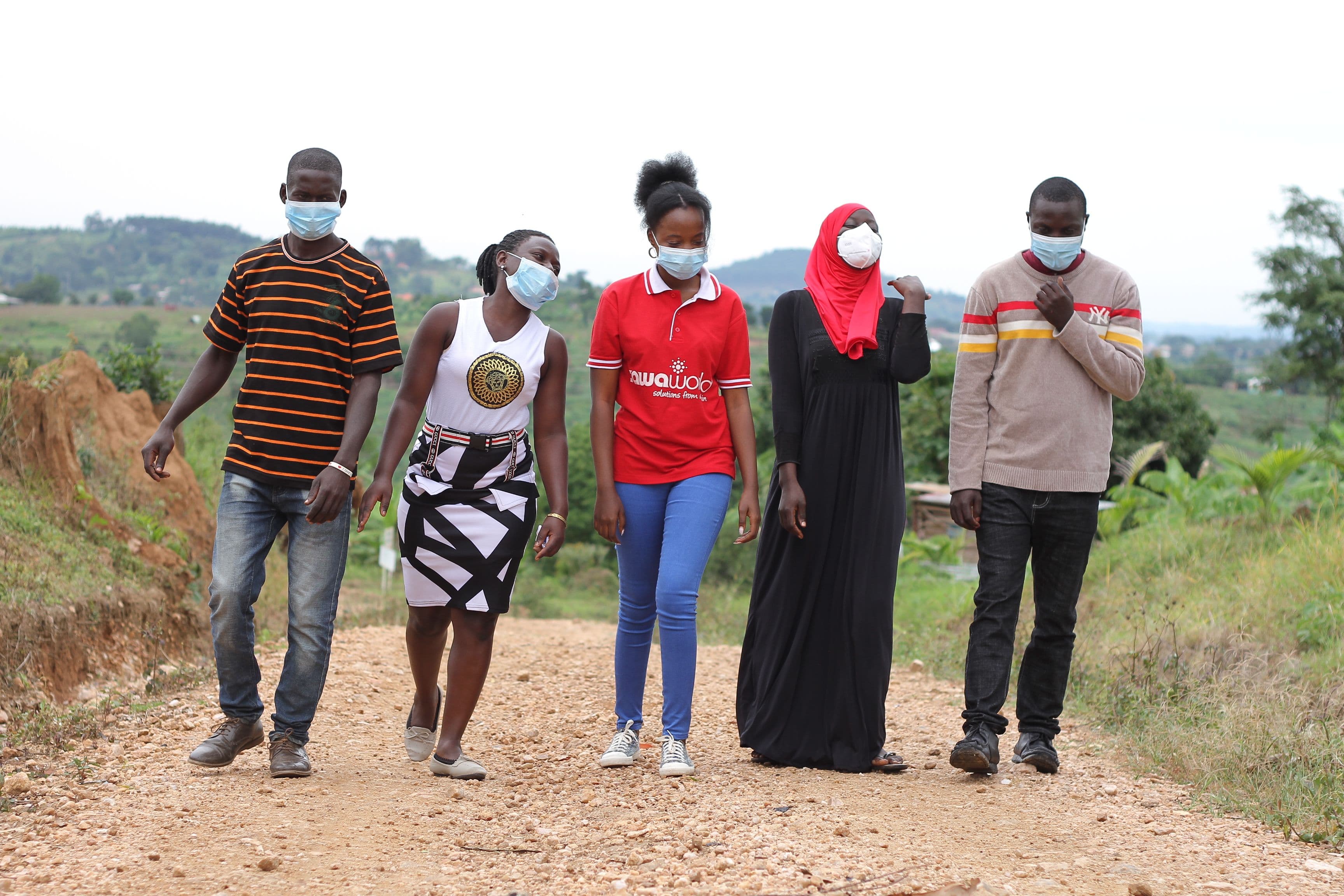
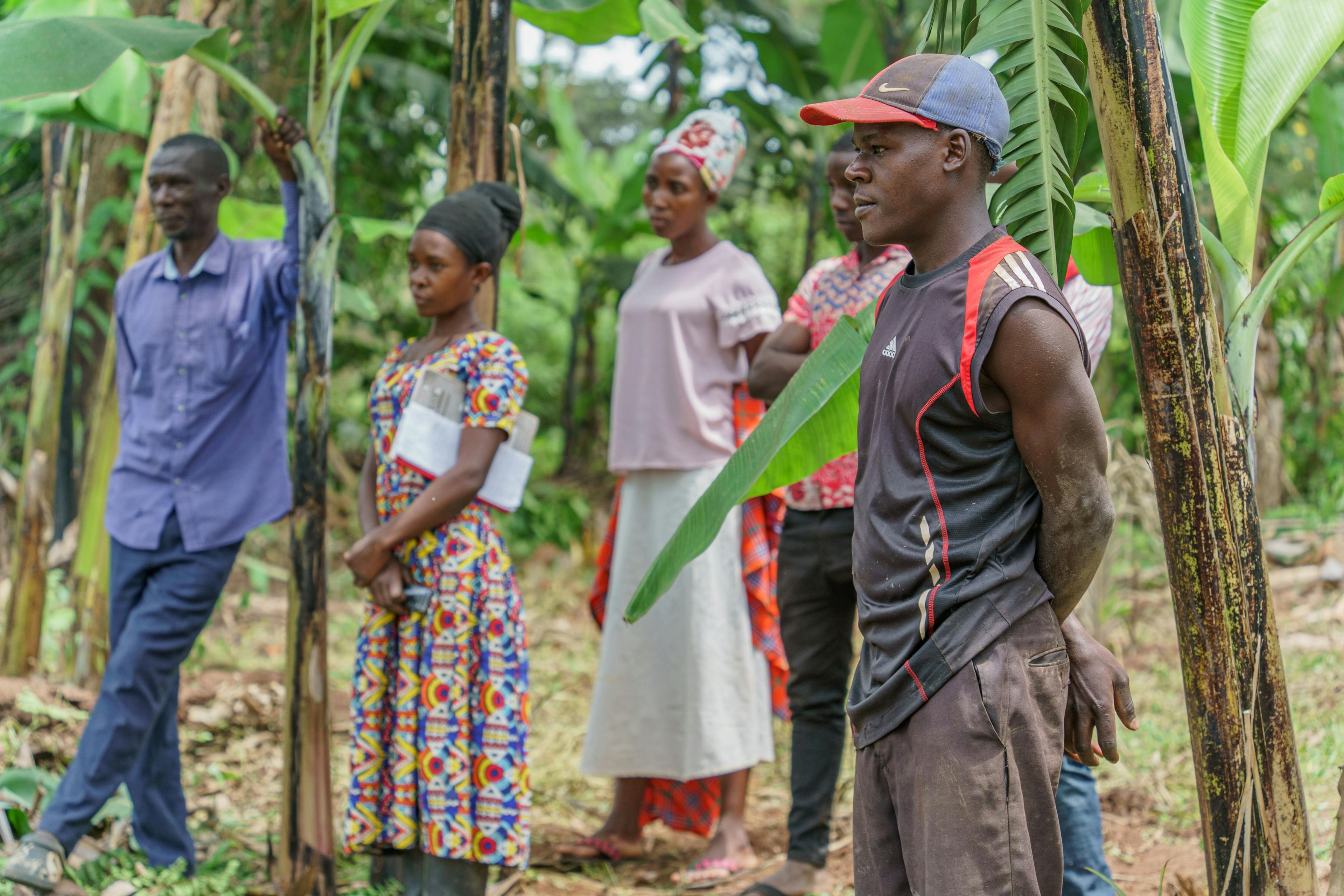
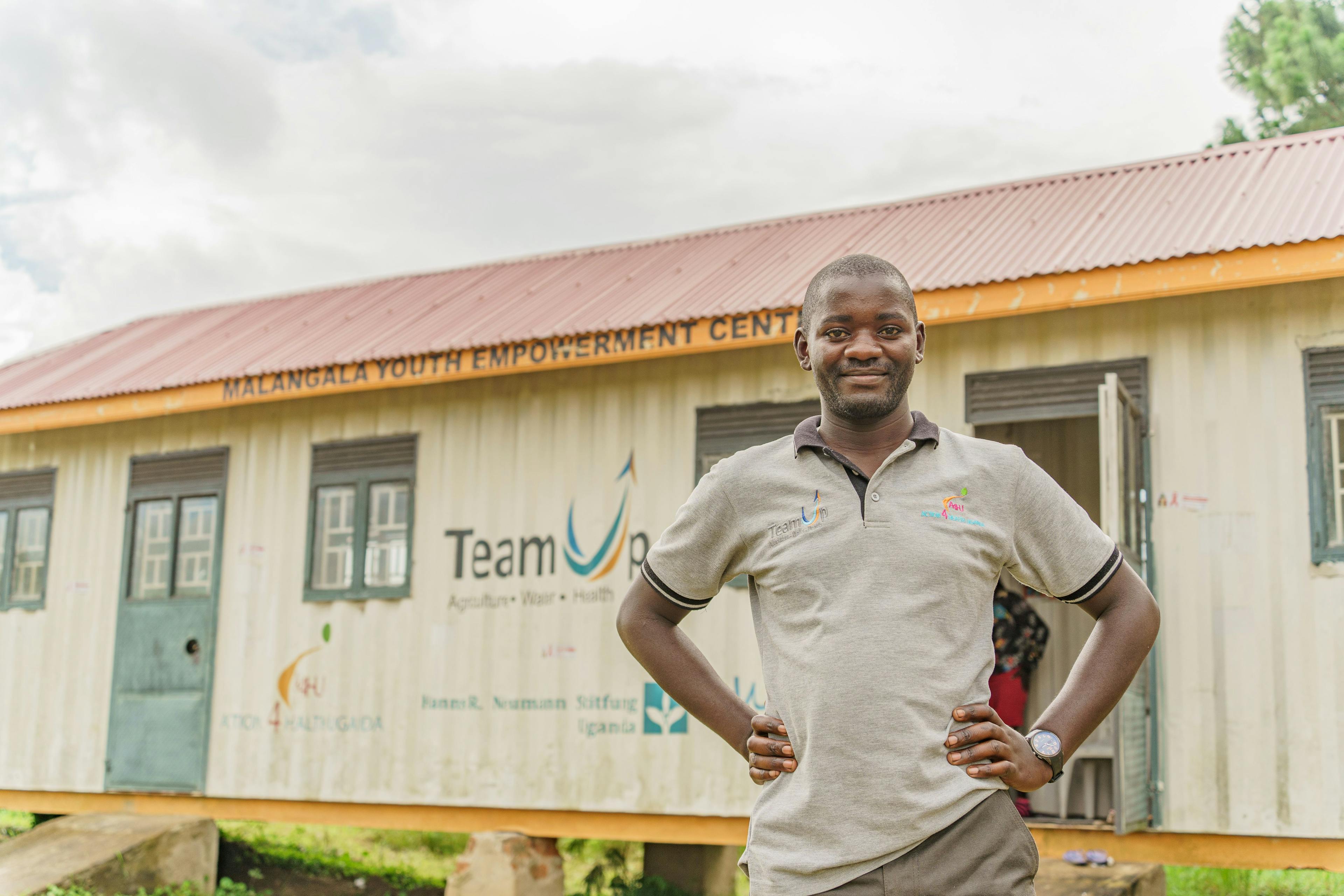
Efficiency, effectiveness and success
Monica Basemera, Head of the Coordination Unit, TeamUp Uganda, agreed on these arguments and acknowledged that it takes time, commitment and work to develop successful partnerships: “When we started out, we had to set the parameters very clearly. We had to find out the specifics of each and every partner, and had to look for the intersections of our respective areas of work.” Constant evaluation and learning are the most important inroads to sustainable success after the partnership took off, she emphasized.
Once the cooperation takes off, the organisational structure of the partnership is also critical. “The democratic processes within the partnership are of utmost importance”, Leona Henry, PhD and Senior Research Associate at the Reinhard Mohn Institute for Corporate Management University of Witten/Herdecke, stressed. The stakeholders have to ask if the partnership is fit for purpose. Is everybody sufficiently equipped to fulfill the tasks they set out to handle? Good intentions and high ambitions are no guarantee for success, the panel concluded. Like Monica Basemera, Leona Henry underlined the importance of a well-functioning self-reflective process and monitoring procedure.
This point was endorsed by Susanne Salz as well. “Monitoring and evaluation systems are crucial”, she reaffirmed. A Theory of Change is needed, and it is only possible to measure successes and failures if there has been a proper stocktaking and an analysis of the situation from where the project starts. “If something is not working, learning is essential in order to do it differently in the future”, Salz settled her argument.
Monica Basemera further emphasized that the success and sustainability of multi-stakeholder partnerships can be enhanced by leveraging existing arrangements and structures within communities. However, she cautioned that if such frameworks are not readily available, stakeholders must proactively build them. Basemera advocated for ensuring that these initiatives are led by young individuals, who not only bring a fresh perspective but also readily embrace change. However, she highlighted that in order to accomplish any of these objectives, a comprehensive understanding of the local context is indispensable.
Specific challenges
Multi-stakeholder partnerships often struggle to maximise their impact on the field level. To make a difference it is vital to track the work that has already been done. The results then can be communicated it to new members, to funders and to the public. “However, the messages that come from monitoring and evaluation are usually not such a good fit for partnerships”, Salz cautioned. “An impact narrative is better suited for this purpose - especially in the beginning of a project phase.”
Leona Henry readily confirmed the importance of a common goal, but added that it is equally important to arrive at a common understanding of how to reach it and a common logic about the way forward. “A truly bottom-up approach is crucial”, she summarised. Even though a lot of partnerships have the ambition to involve all relevant stakeholders continuously, this is all but a given. “Involving a multitude of people creates efficiency problems. It is a conflict of objectives”, Henry concluded. The three panelists agreed that collaborative challenges tend to return repeatedly throughout the whole project cycle and that a strong coordinative person or even unit is needed to apprehend them.
Adding some encouraging aspects, Monica Basemera shared her observations from the TeamUp Uganda experiences in Mityana, the district close to the capital Kampala in which TeamUp is implemented. The project’s structure is quite unique and includes a joint office that fosters efficiency, cost effectiveness and synergy effects in management. “You can talk to each other directly and if you are going to the field or if you are visiting the district you can go together. If you are doing a workshop with the youth you don’t have to do it two or three times over”, she concretised.
However, the most prominent feature of the TeamUp strategy consists of a dual approach, Basemera determined: “On one hand we went into the field right from the start while on the other hand we connected the youth with the local government and the districts as well as with private partners like local banks.” Therefor officials and other partners from outside take better notice of the program’s needs: “We don’t squander their time with too many meetings. Acting together adds significance to our concerns”, she concluded.
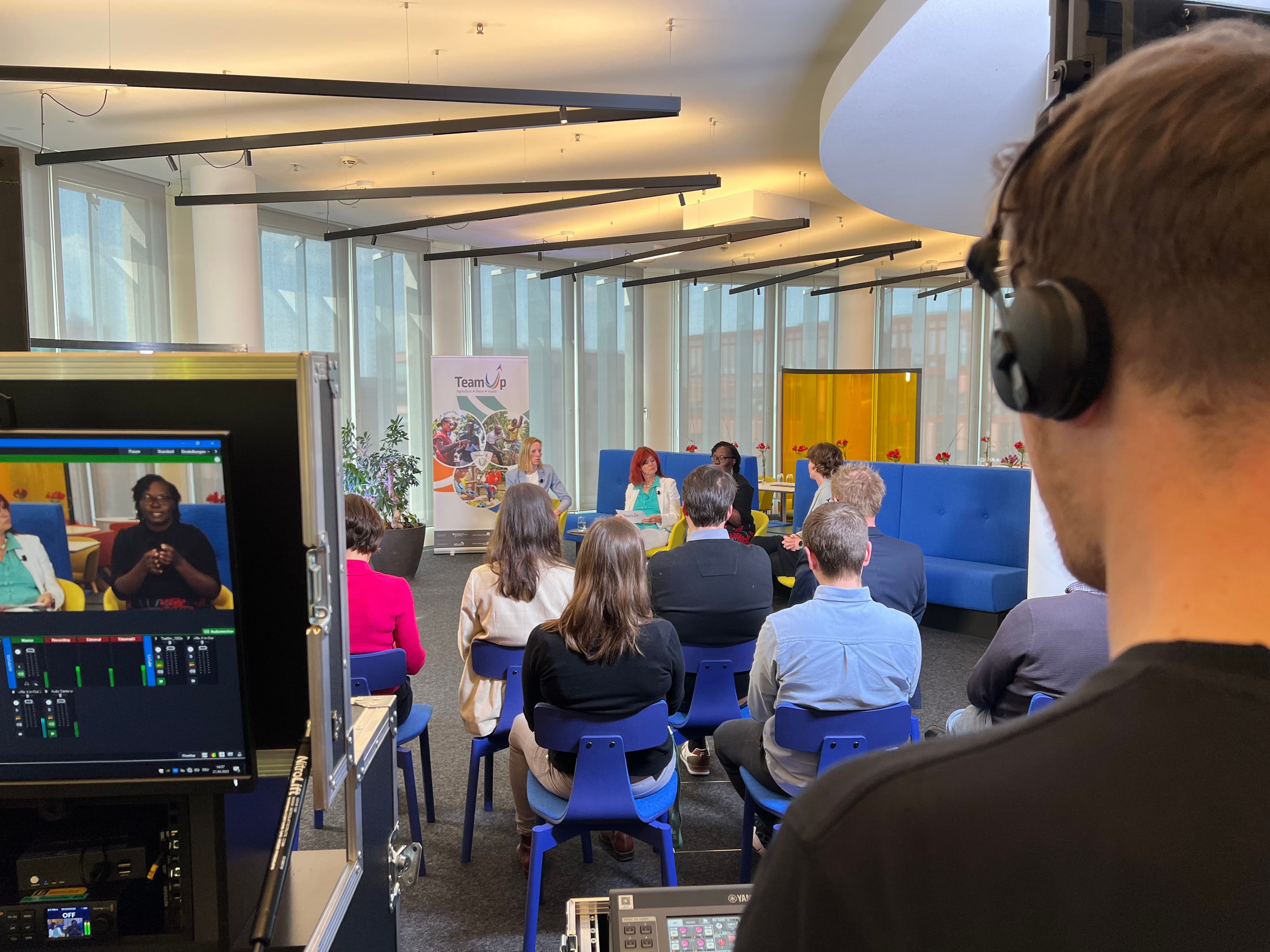
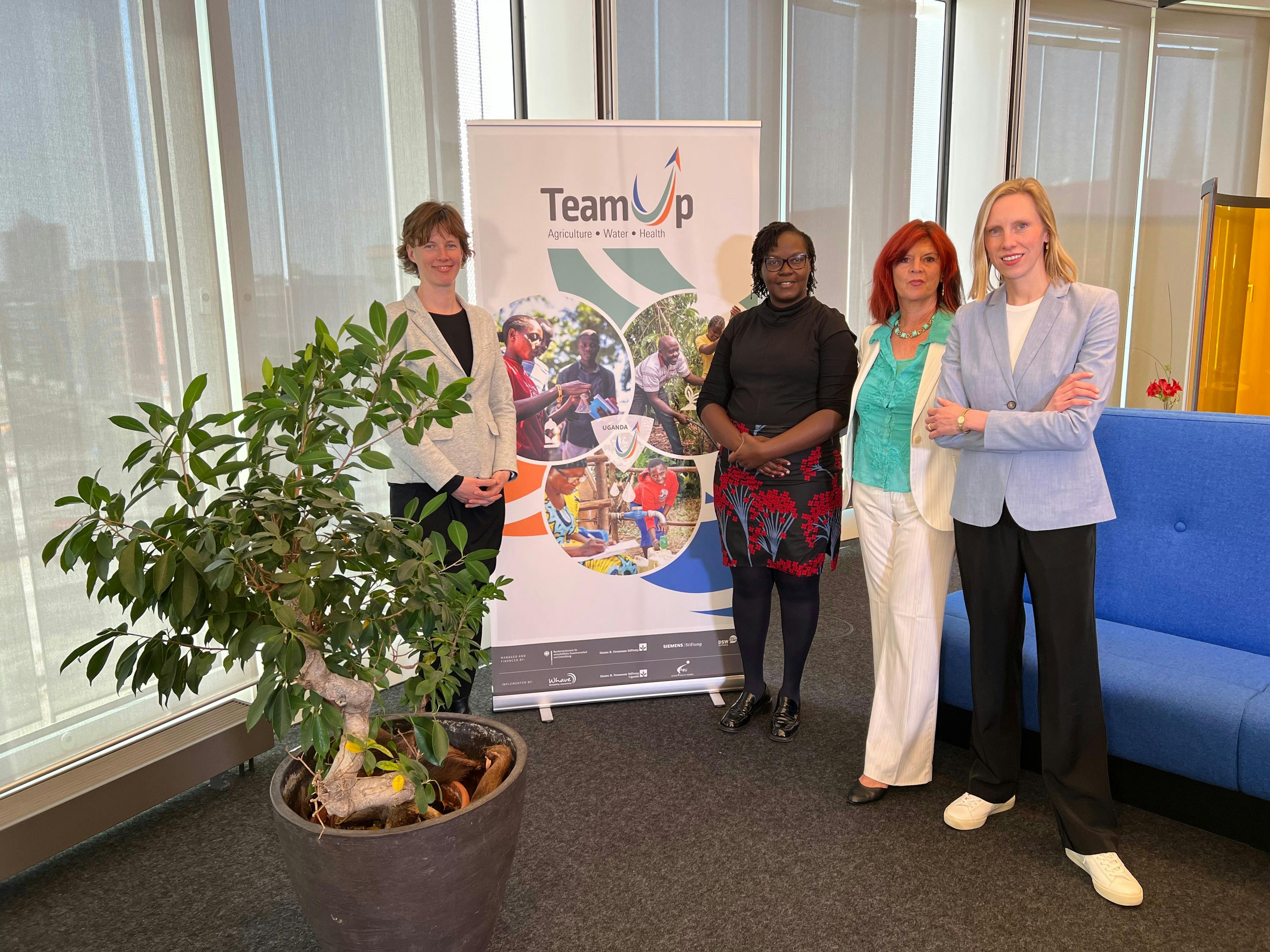
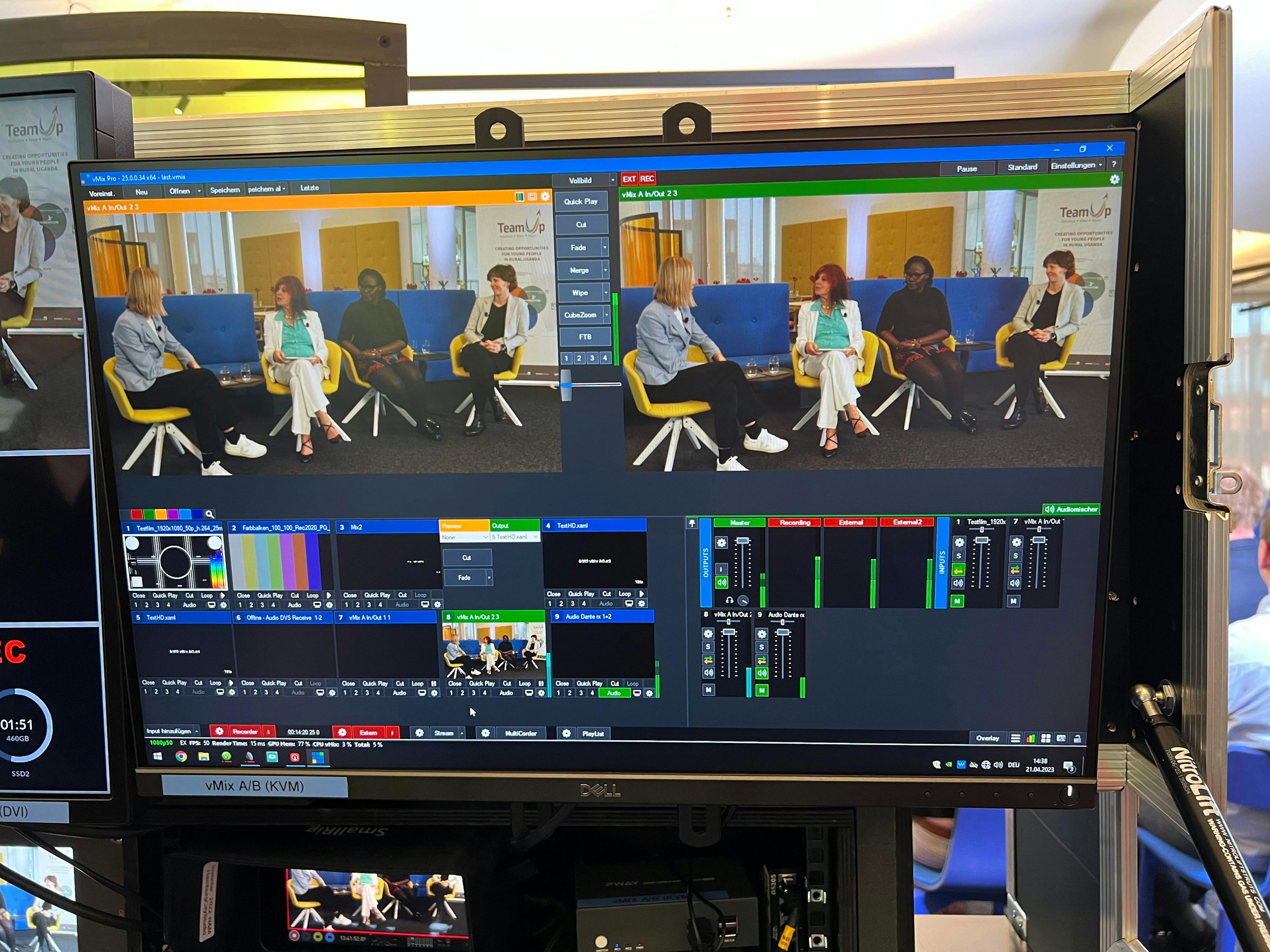
The impact of TeamUp Uganda on young people’s lives
Monica Basemera provided her co-panelists and the audience with a comprehensive overview of the current conditions in the field. To highlight the transformative potential of multi-stakeholder cooperations, she shared a compelling example of a young woman who exemplifies the unique opportunities afforded to beneficiaries through such partnerships:
“Conditions for young people in Mityana were dire before the project started. Young girls had to walk long distances to fetch water and in many cases were subject to abuse. The water sources in their communities were not functioning. Young people were not engaged in income generating activities and without money in their pocket they were not able to access services. We had a high prevalence of HIV and there was a lack of access on sexual and reproductive health and rights (SRHR) - especially to services and information that are youth friendly and age appropriate.”
A variety of opportunities
“Fatuma is what we call a Youth Champion who is leading the local Youth Empowerment Centre in her community. She is a brilliant example of what happens if you give power and decision making abilities to young people, especially young women and girls. First, Fatuma worked as a treasurer in the agricultural segment of TeamUp. However, once she got in touch with the Youth Empowerment Centre she became very interested in SRHR. And that is where the multi-stakeholder partnership comes in: We are able to offer several inroads to a meaningful live for the youth and they can evolve choosing amongst a variety of opportunities.
After Fatuma began to work in the Youth Empowerment Centre she also started to interact with the district administration and now she is even engaged at the national level. She became a true leader because she could live up to her special commitment to SRHR. And those are the kind of leaders that we want in this community. Fatuma is a role model and other young people can try to emulate that.”
Fatumas story was shared during the panel discussion in a short video with insights into her daily life, her activities and her family farm. Watch the recording.
Disruptions
Leona Henry recently conducted a study on the resilience of multi-stakeholder cooperation with respect to the COVID-19 pandemic. She found out that such partnerships can indeed be very resilient if they manage to develop innovative and entrepreneurial approaches to community engagement very quickly – and together with community members. This can be achieved for example by mobilising digital technology in new ways or by restructuring the setup in a novel manner. “After overcoming an obstacle the partnerships can even bounce back stronger”, Henry emphasized.
As TeamUp Uganda was one of the organisations Henry had examined in her study, she had some praise to offer to the project in Mityana: “TeamUp Uganda developed some of these very innovative features in responding to the pandemic outbreak”, Henry recounted. “The phone farming example is very telling: Normal field trainings were substituted with virtual meetings in order to stop spreading the virus.”
Underpinning Basemera’s point, Henry added that changing working procedures on the fly is something that requires a strong connection between local communities and the partnership already before the moment of crisis arrives. This connection is a key element of success in general but even more important during times of crisis. Another factor is the strong integration of local youth into the partnership as they are more willing and able to welcome changes.
Respect and fairness
Leona Henry emphasized the importance of fostering equitable relationships among stakeholders within a partnership. To ensure inclusivity and meaningful participation, she advised consistently posing critical questions throughout the project cycle: "Do all stakeholders affected by the partnership genuinely have a voice in the decision-making process? Are their perspectives truly heard?" Henry further recommended integrating the concepts of participation and fairness into monitoring and evaluation activities and reports.
Susanne Salz proceeded to outline the key prerequisites for fostering respect and fairness among diverse actors within a multi-stakeholder partnership. She emphasized the following essential factors: shared goals, trust, transparency, and the establishment of effective communication and governance structures. Salz emphasized that these elements play a pivotal role in ensuring role clarity and successful collaboration. Clear and open communication channels, in particular, serve as important keys to achieving a common understanding and facilitating effective cooperation among stakeholders.
Monica Basemera contributed additional relevant aspects to accomplishing successful cooperation: Every stakeholder and partner needs a certain degree of autonomy to fulfill the tasks at hand. “If you learn from mistakes, it’s ok. You have to accept and sometimes even to allow them.” She otherwise deemed it impossible to learn and to do it better the next time. She went on saying: “I think that the results are more sustainable and replicable, if there is a code of conduct on what is acceptable, and what is not. This makes it easier to learn the necessary lessons about trust and common values.”
In her concluding remarks, Basemera issued a reminder to everyone that a multi-stakeholder cooperation should always be viewed as a means to an end: “Our ultimate goal is to make ourselves not needed.”
